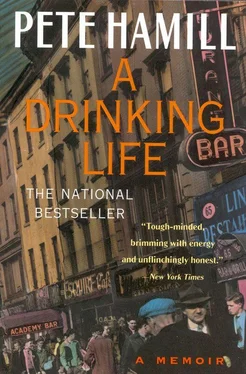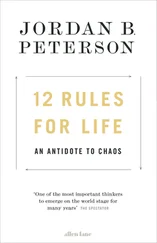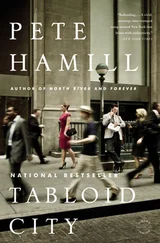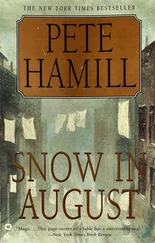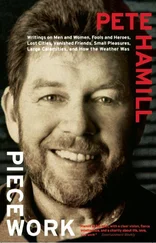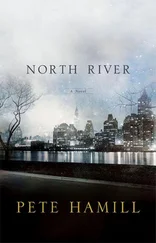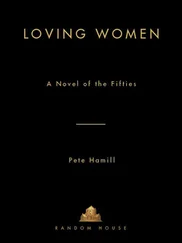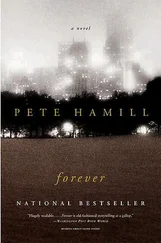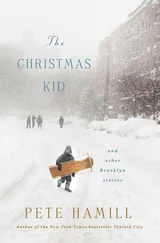I began to devour Caniff, driven by a sense of sudden urgency. It had been announced in the Daily Mirror that this was Caniff’s last year doing Terry for the Daily News; he would create a new strip that would run in the Mirror. I wanted to preserve Terry before it was gone forever. I clipped Terry from the Daily News every day and filed the strips in letter-sized envelopes. I saved the Sunday pages, with their beautiful colors and spectacular action panels. Then I started buying scrapbooks, oversized books made of cheap coarse paper, and began filling them with the Terry strips, using the pale yellow glue called mucilage. But there was a problem. In Caniff’s wonderful comic strip, time actually passed; Terry got older (although the women didn’t). The characters lived in the real world (or so I thought), the world of war and women and airplanes, the world described each day in the front of the newspaper. They didn’t inhabit Captain Marvel’s world of magic lightning or the garish places where Captain America pursued the Red Skull. Terry and the Pirates was like some long picaresque novel, and in 1946 I felt that I had started reading it near the end. The newspaper sequences were self-contained, each story taking about two months before shifting into another combination of heroes and villains. But I wanted to read the novel’s early chapters too. Caniff often brought back characters from Terry’s youth; the Dragon Lady, Pat Ryan, April Kane, Burma, made more than one appearance. I wanted the whole story, not just its final episodes.
The task of piecing together that story was like the search for the full run of the Bomba books (and resembled the basic task of reporting). I had to work backwards. In tiny type at the bottom of each strip there was a copyright line that supplied the year of its first appearance; a hand-lettered date gave the month and day: 4/1, say, or 6/24. Unfortunately, there were almost no old newspapers in the neighborhood; like my skates, they’d gone to the war, bundled up for scrap paper drives. But many of the newspaper strips had reappeared in the brightly colored pages of Super Comics, which also reprinted other strips from the Daily News. They had also been converted into Big Little Books. So I followed the same route taken in the Bomba search, exploring the archipelago of secondhand comics shops and bookstores. I was driven by fundamental questions. How did Terry Lee get to China? Who was Pat Ryan? When did they meet the Dragon Lady? Why on earth would Pat Ryan fall in love with prissy Normandie Drake if Burma was around? I wanted to read it all, to keep going back until I found the beginning. In a good story, something happened and as a result, something else happened. You went to China or to Fox Lair Camp, and you were changed by what happened to you. I wanted to know what happened to Pat Ryan and Terry Lee.
My obsession with Terry and the Pirates was different in one sense from the long pursuit of the Bomba books. I wanted to know Milton Caniff. In a way, he was the true hero of the comic strip. I would sit at the kitchen table and try to copy his figures and always failed; drawing Flip Corkin wasn’t as simple as making an image of Flattop or Batman, and the Dragon Lady was impossible. I would get the general shapes down on paper but there was always something wrong: the original expression changed into an empty smudge, the ears were in the wrong places, the hands looked thick and clumsy. But I kept trying. After all, Caniff was the best. Like Sugar Ray Robinson. And there was no point in trying to be less than the best, was there?
In 1947, Caniff, as announced, left Terry to another artist, George Wunder, and started Steve Canyon in the Daily Mirror. There was a great burst of publicity. Caniff appeared on the cover of Time. The Mirror did a series of ads building up to the debut of the new strip. I learned that Caniff was an Irish-American too, from Ohio; had gone to college; wanted to be an actor; came to New York to work for the Associated Press, where he drew a strip called Dickie Dare, and went on to do Terry in 1934 for the Daily News. He was syndicated in more than four hundred newspapers and now lived in a beautiful house in New City, New York. The photographs of the studio showed a room that was larger than our entire flat. I saved all this publicity, staring at Caniff’s face, looking at examples of his work going back to his childhood, and then, from the first great Sunday page, clipped every Canyon strip until I went into the navy in 1952.
That first Sunday page of Steve Canyon, dated January 18, 1947, was as good as any movie. For five panels, we don’t see Canyon’s face, but his character is established by various people who greet him on his way into an office building. An Irish cop thanks him for stopping off to see his sister in Shannon; the doorman thanks him for sending a souvenir from Egypt to his son; a blind newsdealer, called only “sarge,” and obviously a war veteran, thanks Canyon for backing him in setting up the newsstand; a flower girl offers him a carnation for his buttonhole, but when he turns her down he says that she and her mother are due for a movie on him; the elevator girls stammer a hello and say that for him, they won’t wait for a full car. So we know immediately that Canyon is a good, generous man, a world traveler, thoughtful, personal, attractive to women. We see his face for the first time in the sixth panel; it’s lean, and there’s a black streak in his blond hair. Wearing a checkered overcoat, he opens the door with his company’s name on the glass: Horizons Unlimited. Beyond the door is his secretary, a Polynesian woman named Feeta Feeta, with lovely breasts under a polka-dotted blouse, flowers in her hair, talking on the phone. On the line is Mr. Dayzee, the formal and officious male secretary to a woman named Copper Calhoun, “the big she-wolf of the stock market.” Dayzee virtually orders Canyon to come immediately to Calhoun’s apartment; Canyon refuses the order, objecting to the tone of the demand, and tells Dayzee that “the click you hear will mean you’re soloing.” Feeta Feeta looks resigned; the office rent is due, “but I guess it’s bad form to get into regular habits like that. …” In the final panel, Copper Calhoun, with sleek black hair, the arched eyebrows of the Dragon Lady, a long cigarette in one hand, says: “I want that man!! … Get him!”
I loved this and sat down to labor over a long letter to Caniff, telling him how great it was and how I wanted to be a cartoonist too. A few weeks later a package arrived in the mail from New City. Inside was a note from Caniff himself, a copy of a brochure he’d written for aspiring cartoonists, “A Guide for an Armchair Marco Polo,” and a colored picture of Steve Canyon. I was hooked. If Terry belonged to my mother first, Steve Canyon was mine from the start. On the street, nobody else cared much about my obsession, so this became another part of my secret life.
Later in 1947, I found a book called The Comics by Coulton Waugh, who back in the 1930s had succeeded Caniff on Dickie Dare. His book told the story of American comic strips from their beginnings in the 1890s with R. F. Outcault’s The Yellow Kid to the triumph of the comic books. There was, of course, a chapter on Caniff and his imitators, and for the first time my faith in the great man’s talents was shaken. Caniff was being imitated by hundreds of other cartoonists, with more appearing every day. Did I want to be just another imitator? Could I be an imitator? In Waugh’s book I saw the immense variety of possible cartoon styles: Roy Crane’s Buz Sawyer and Captain Easy, George, Herriman’s Krazy Kat, Cliff Sterrett’s Polly and Her Pals, Hal Foster’s Prince Valiant, Crockett Johnson’s Barnaby. There were so many different ways to be a cartoonist. So when I failed once more to capture the sultry pout of the Dragon Lady, I would console myself by thinking, Hey, so what, I don’t want to be just another hack imitator of Milton Caniff.
Читать дальше
